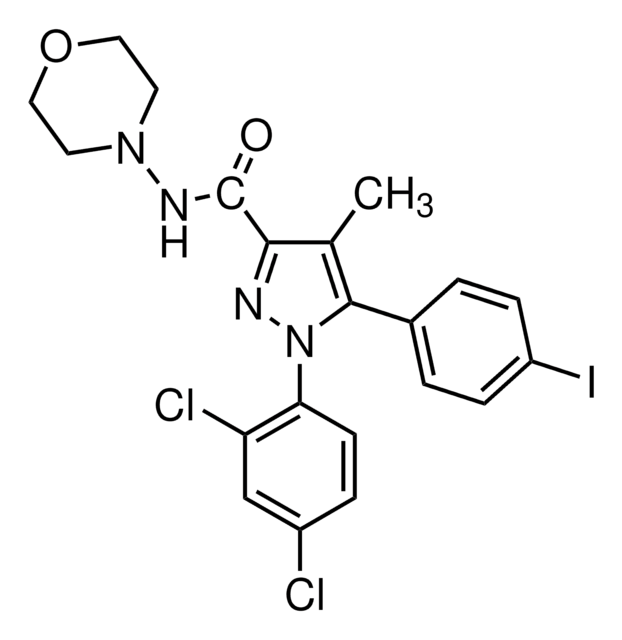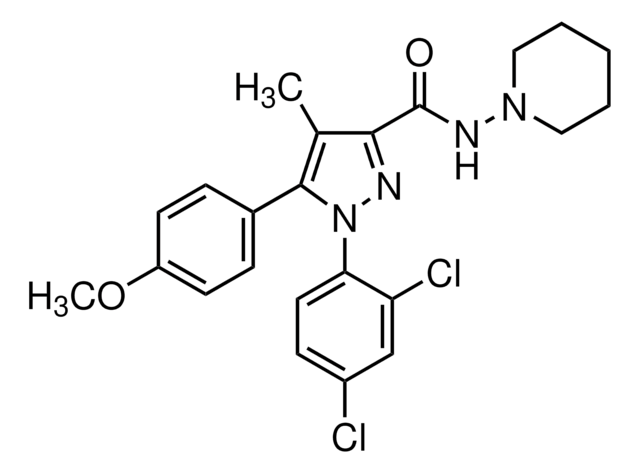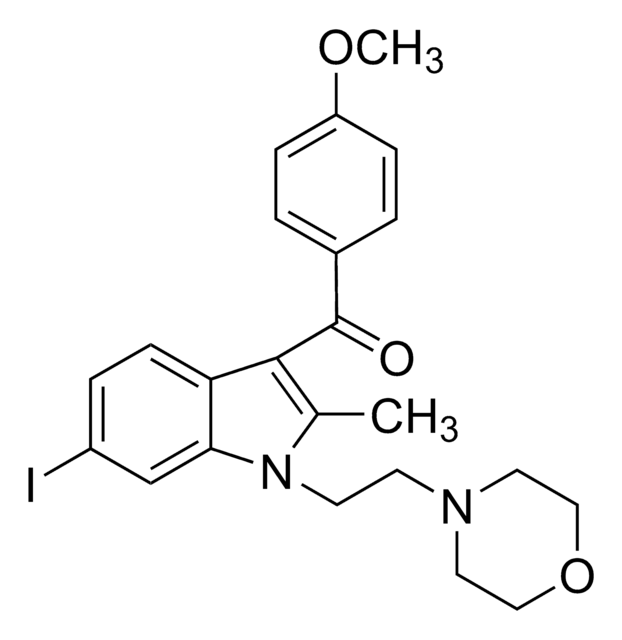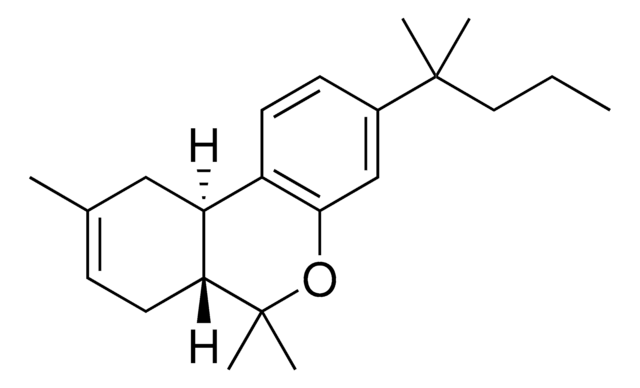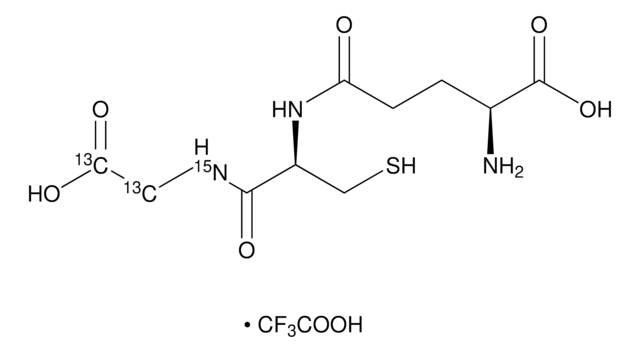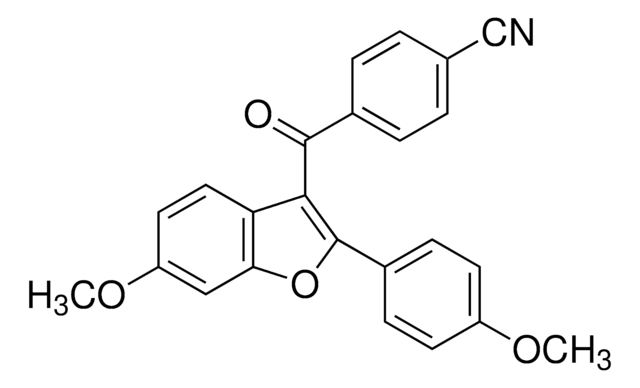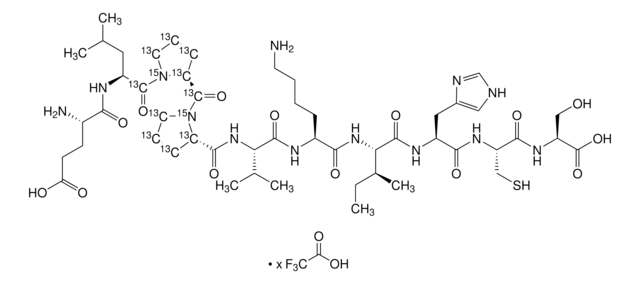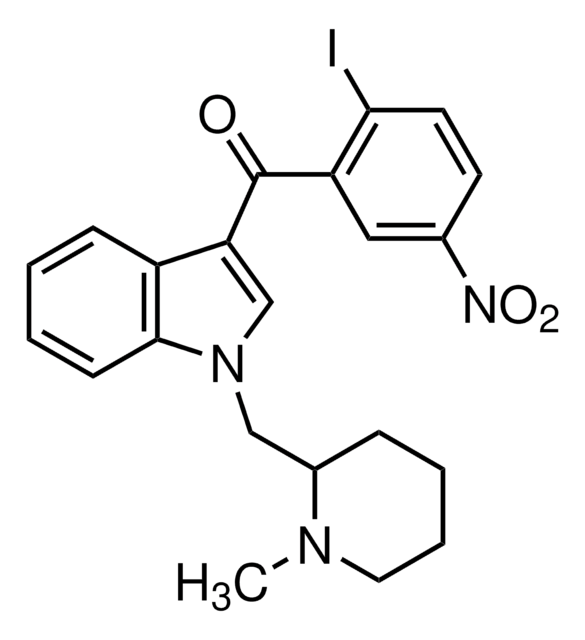推薦產品
品質等級
化驗
≥98% (HPLC)
形狀
powder
顏色
white to brown
溶解度
DMSO: 2 mg/mL, clear (warmed)
儲存溫度
2-8°C
SMILES 字串
ClC1=CC(Cl)=C(N2C(C3=CC=C(Cl)C=C3)=C(C)C(C(N)=O)=N2)C=C1
生化/生理作用
AM4113 is a Cannabinoid CB-1 neutral antagonist. AM4113 reduced reward and reinstatement of drug-seeking behavior, reducing cue-induced reinstatement in monkeys trained to self-administer cocaine.
AM4113 is a pyrazole-3-carboxamide analog of rimonabant (SR141716A). In rats, it suppresses food-motivated behaviors and food intake, thereby reducing weight gain without inducing nausea. AM4113 has poor oral bioavailability. Therefore, it may not act as an effective appetite suppressant in humans.
危險聲明
防範說明
危險分類
Aquatic Chronic 4
儲存類別代碼
11 - Combustible Solids
水污染物質分類(WGK)
WGK 3
閃點(°F)
Not applicable
閃點(°C)
Not applicable
Charles W Schindler et al.
Neuropsychopharmacology : official publication of the American College of Neuropsychopharmacology, 41(9), 2283-2293 (2016-02-19)
Nicotine, the main psychoactive component of tobacco, and (-)-Δ(9)-tetrahydrocannabinol (THC), the main psychoactive ingredient in cannabis, play major roles in tobacco and marijuana dependence as reinforcers of drug-seeking and drug-taking behavior. Drugs that act as inverse agonists of cannabinoid CB1
K S Sink et al.
Pharmacology, biochemistry, and behavior, 91(3), 303-306 (2008-08-16)
Drugs that interfere with cannabinoid CB1 transmission suppress food-motivated behaviors, and may be clinically useful as appetite suppressants. Several CB1 receptor inverse agonists, such as rimonabant and AM251, as well as the CB1 receptor neutral antagonist, AM4113, have been assessed
Sherrica Tai et al.
Psychopharmacology, 232(15), 2751-2761 (2015-03-17)
Previous reports shows rimonabant's inverse properties may be a limiting factor for treating cannabinoid dependence. To overcome this limitation, neutral antagonists were developed, to address mechanisms by which an inverse agonist and neutral antagonist elicit withdrawal. The objective of this
Brian D Kangas et al.
The Journal of pharmacology and experimental therapeutics, 344(3), 561-567 (2013-01-05)
Cannabinoid receptor 1 (CB(1)) inverse agonists (e.g., rimonabant) have been reported to produce adverse effects including nausea, emesis, and anhedonia that limit their clinical applications. Recent laboratory studies suggest that the effects of CB(1) neutral antagonists differ from those of
T U C Järbe et al.
Pharmacology, biochemistry, and behavior, 91(1), 84-90 (2008-07-22)
We examined open-field effects in rats of the cannabinoid 1 receptor (CB1R) agonist WIN55,212-2 (WIN; 3 mg/kg) and its interaction with the CB1R putative neutral antagonist AM4113 (0.3 to 3 mg/kg). Separate studies examined AM4113 alone (0.3 to 5.6 mg/kg).
我們的科學家團隊在所有研究領域都有豐富的經驗,包括生命科學、材料科學、化學合成、色譜、分析等.
聯絡技術服務